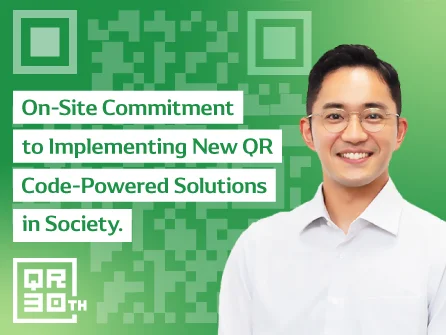Did you find this article helpful for what you want to achieve, learn, or to expand your possibilities? Share your feelings with our editorial team.
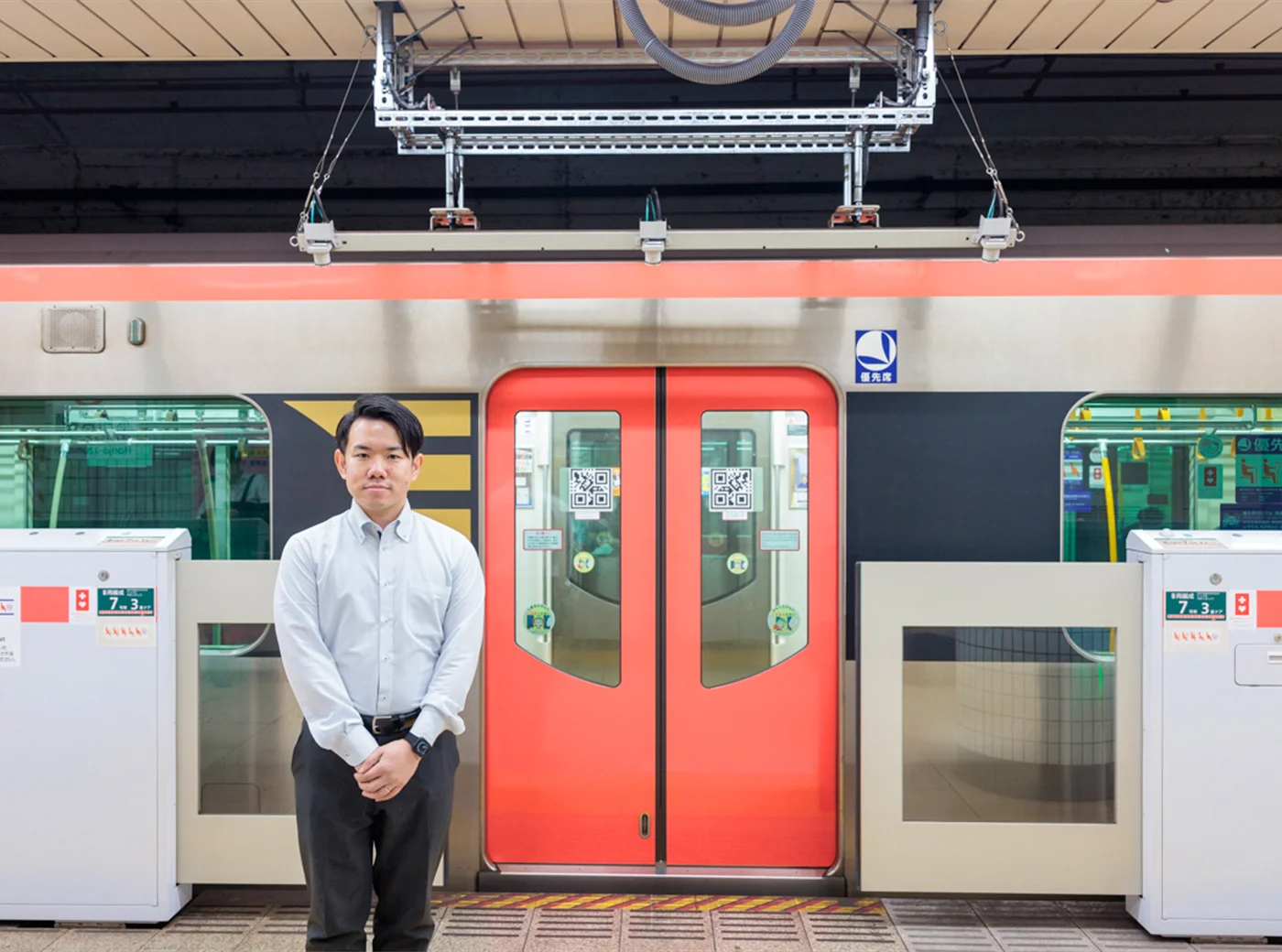

Feb 25, 2025
CAREER & LIFEQR Codes Powering Digital Transformation—Inheriting the Inventor's Spirit of Innovation to Face the Next 30 Years
The Evolution of QR Code Technology: Forged Through Rigorous On-Site Commitment
From cashless payments on smartphones to tabletop ordering at restaurants, QR codes have become an essential part of daily life, making things more convenient and efficient.
According to a survey conducted in February 2021, QR codes have achieved widespread global adoption. In the UK, 90% of people have used them, followed closely by China at 88%. In France and Germany, over 70% of the population has used QR codes, highlighting the global reach of this two-dimensional code technology.
The QR code was first introduced in 1994. Now, as it celebrates its 30th anniversary, how has it evolved, and how will it contribute to solving future societal challenges over the next three decades?
This article explores the lesser-known history of QR code innovation and its future potential, alongside young engineers involved in its development and solution proposals.
Contents of this article
The Evolution of QR Code Technology Driving Digital Transformation of Society
In 2020, the COVID-19 pandemic created a strong push for society to digitalize. During this time, QR codes became widely used for contactless information exchange, and they have become increasingly embedded in society ever since.
While QR codes have become an indispensable technology in our increasingly digital world, what is the history behind their creation?
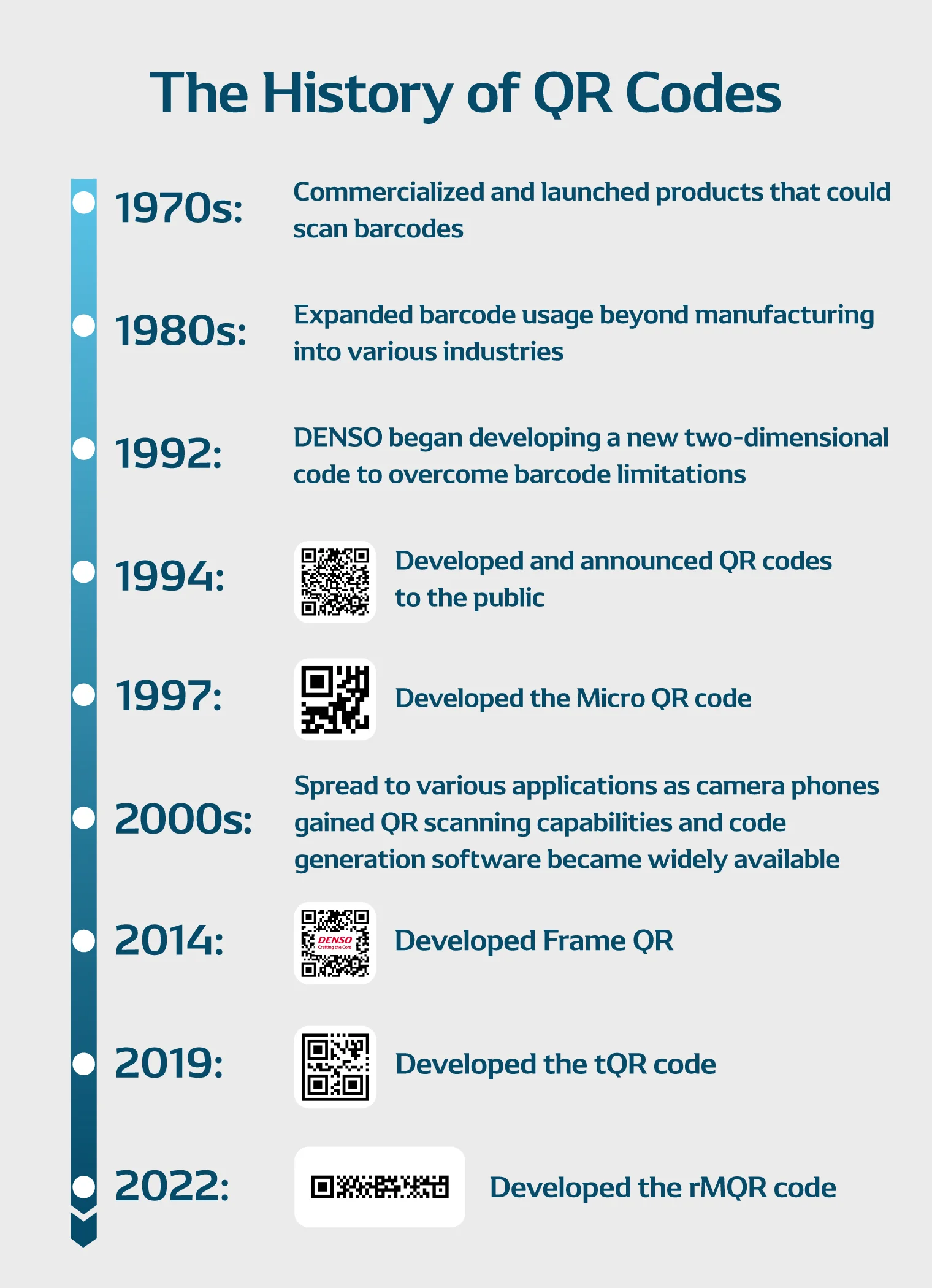
During Japan's period of rapid economic growth, industries—particularly retail and manufacturing—began actively embracing automatic identification technologies like barcodes to streamline their operations.
A significant milestone came in 1974 when DENSO integrated barcodes into Toyota's Kanban Production System to enhance production management, while simultaneously developing and commercializing barcode scanning equipment. Throughout the 1980s, barcode adoption expanded rapidly beyond its initial applications, taking root in manufacturing, retail, logistics, and numerous other sectors.
In 1992, anticipating both the dawn of the internet age and growing industrial demands for automatic identification technologies, DENSO made a strategic decision to develop a new two-dimensional code system.
This decision was driven by the limitations of traditional barcodes, which could only store about 20 alphanumeric characters. As barcode usage became more widespread, the market increasingly demanded more sophisticated codes, that could store larger amounts of data, accommodate more character types, and fit into smaller spaces.
In response to these needs, DENSO created the QR code in 1994—a breakthrough technology that could not only store and scan large amounts of data quickly but also handle Japanese characters including kanji, kana, and hiragana. The new code could store approximately 200 times more information than a traditional barcode and demonstrated all the advantages of two-dimensional technology, including high-speed scanning and the ability to remain readable even when partially damaged or smudged. These features helped QR codes quickly expand beyond their manufacturing origins.
To promote widespread adoption and infrastructure development, DENSO made the pivotal decision to make QR code patents freely available—a move that catalyzed global adoption. The technology's integration into daily life accelerated dramatically in the early 2000s with the rise of camera-equipped mobile phones and social media platforms.
Since then, DENSO has maintained its commitment to innovation, continuously evolving QR code technology and its practical applications.
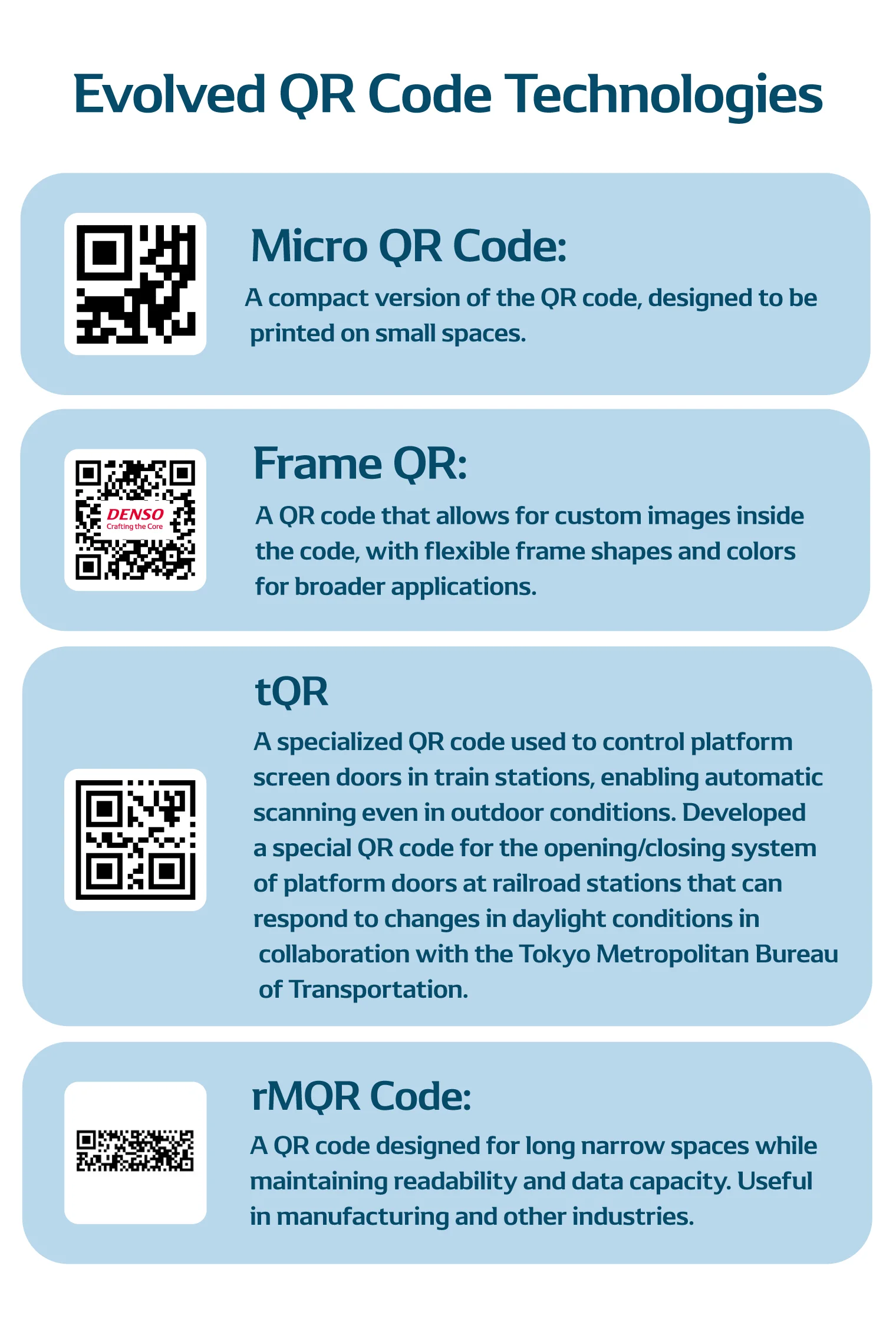
Developing QR Codes Side by Side with Their Inventor
As QR code technology has evolved over the decades, a new generation of engineers has carried forward the vision of Masahiro Hara, the original QR code's lead developer. Among these innovators is Yosuke Kanbe from Engineering Department 2 of DENSO WAVE's Edge Product Business Unit.
Kanbe Yosuke, who specialized in image processing at university, joined DENSO WAVE with the aspiration to apply his knowledge to product development. Initially assigned to a different department, he transferred to his current team in his third year, working at the forefront of QR code development while embracing Hara’s philosophy.
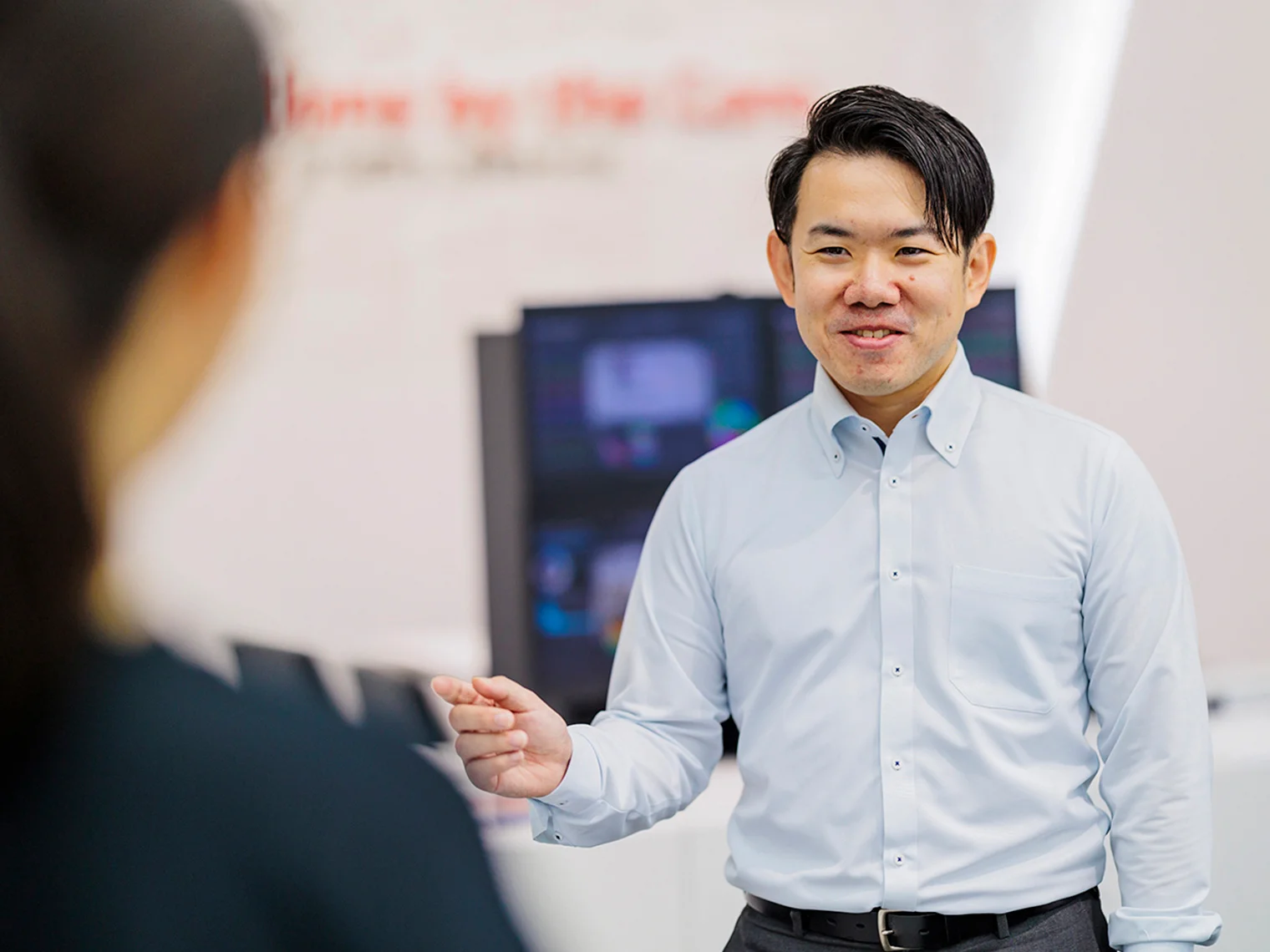
Kanbe has contributed to the development of various barcode scanning solutions used in everyday settings, including the AT30Q handheld scanner, commonly found at major retailer self-checkout systems, and the QK30 scanner used in ticket gates and delivery lockers.
Beyond software development, he has worked on optimizing QR code scanning performance by collaborating with hardware engineers on lighting and sensor controls. He also played a key role in developing new QR codes such as tQR, designed for train station platform doors, and the rMQR code, a rectangular format suited for narrow spaces.
Reflecting on the tQR project, which began in 2016 at the request of the Tokyo Metropolitan Bureau of Transportation, Kanbe recalls:
"There is a risk of both visually impaired individuals and the general public falling onto the tracks at train station platforms, leading to numerous accidents. To enhance safety, the government has been promoting the installation of platform doors at stations with a daily ridership of over 100,000.
Traditionally, the control system for automatically opening and closing platform doors in sync with train arrivals required communication devices to be installed on the trains. However, the high cost of equipping every train with these devices posed a significant challenge. As an alternative solution, QR codes emerged as a viable option," explains Kanbe.
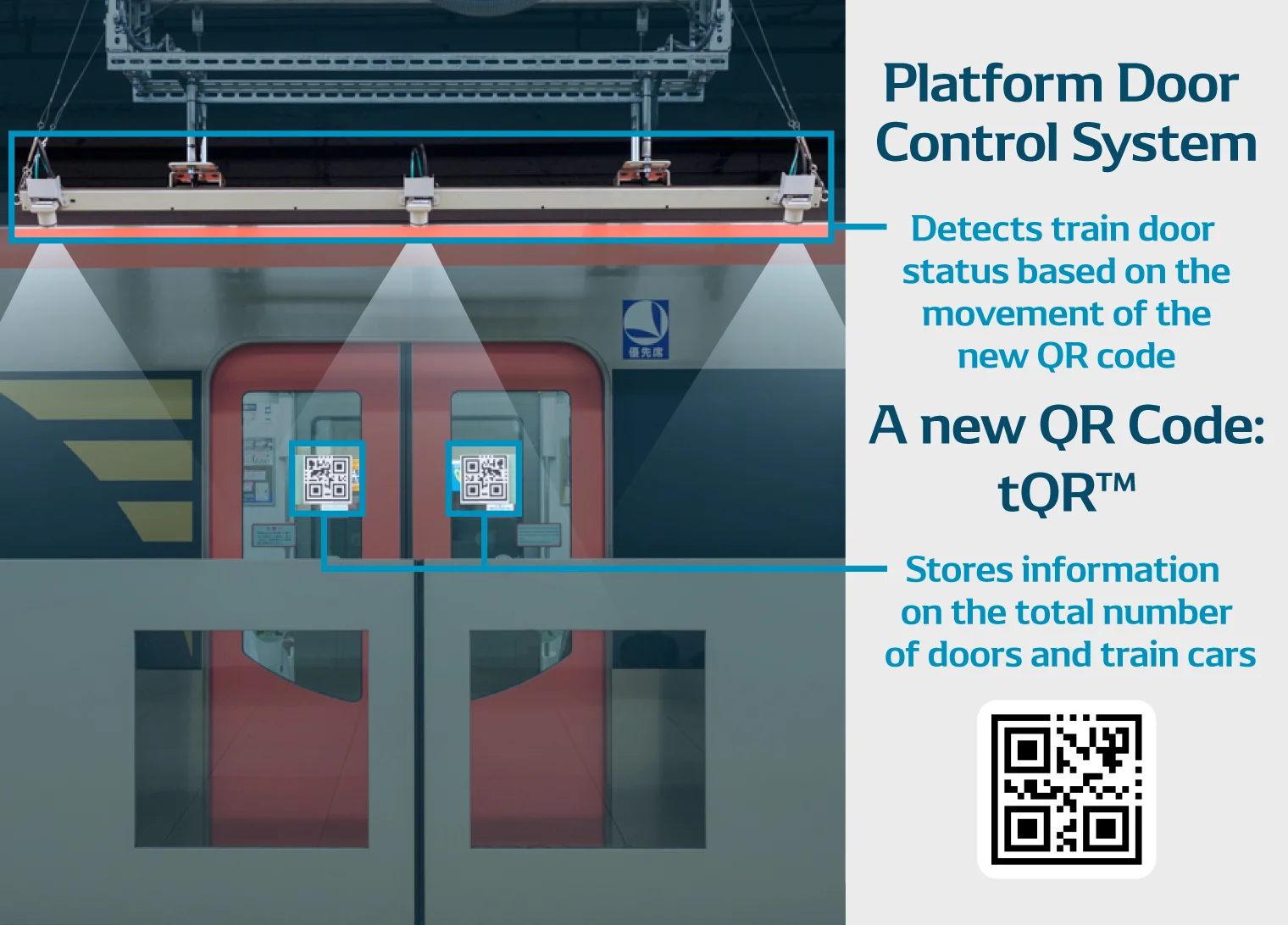
Initially, the team explored using standard QR codes, but train station environments presented challenges due to fluctuating sunlight and visibility conditions. They decided to develop a specialized QR code, tQR, instead.
With guidance from Hara, Kanbe and his team enhanced tQR to improve readability, increasing its damage tolerance from 30% to 50% to account for outdoor factors such as glare and rain.
To ensure reliability, multiple tQRs were placed on train doors, allowing redundancy in case of peeling or damage. These optimizations made tQR highly adaptable to real-world train operations.
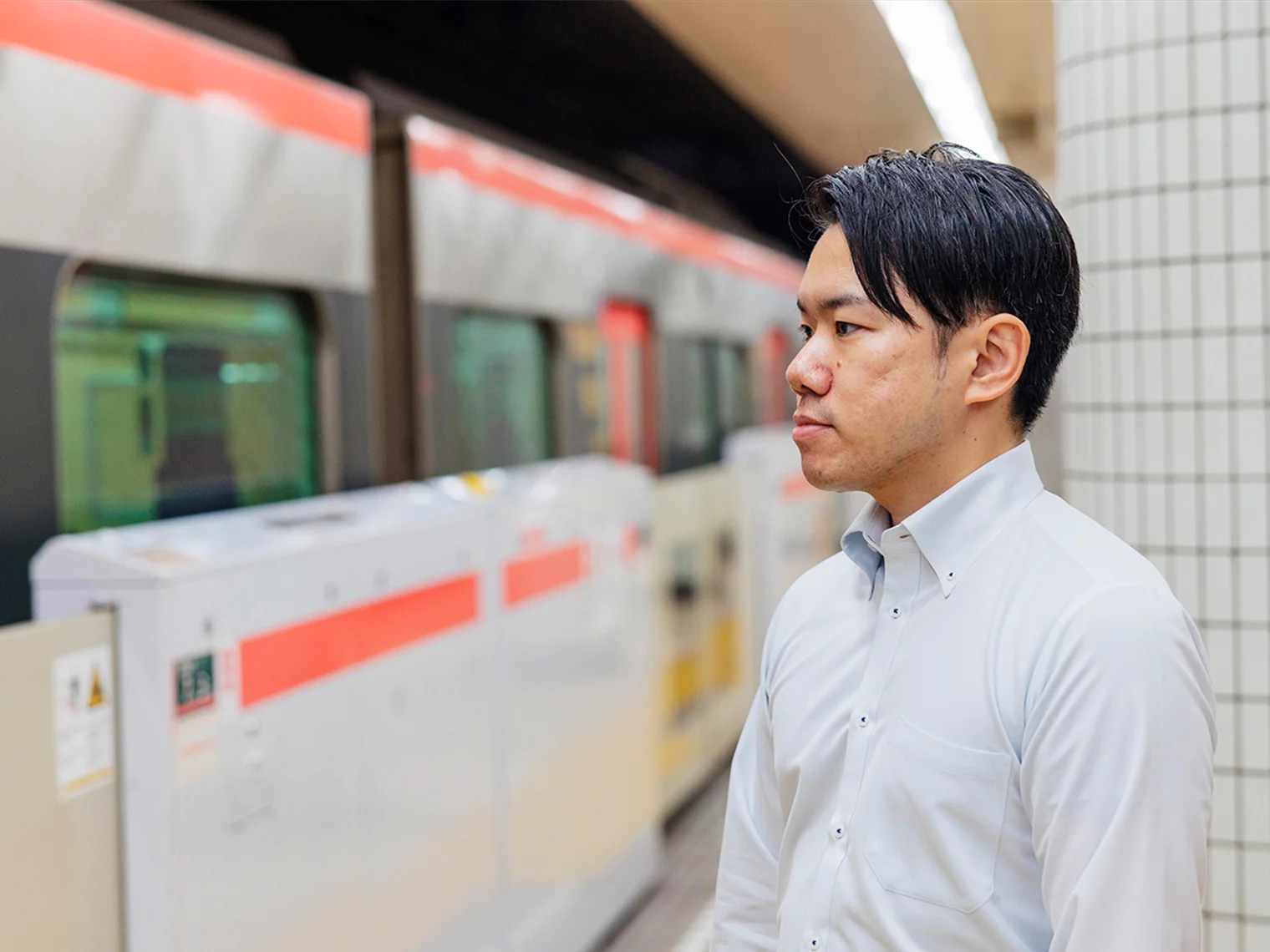
Kanbe recalls that Hara’s unwavering commitment to on-site problem-solving became a guiding principle for the entire development team, himself included. As a developer, he learned a great deal from Hara’s dedication—always going to the testing location in person, regardless of the time or circumstances, whenever on-site verification was needed.
“In the early testing phase of platform doors, we conducted trials at night to avoid disrupting daytime train schedules. I still remember how Hara would always be present, no matter how late, to observe and support the testing process firsthand,” Kanbe recalls.

Another project that Kanbe played a key role in was the development of the rMQR code. As mentioned earlier, rMQR codes offer both high readability and large data capacity while being designed for printing in narrow, elongated spaces.
This innovation opens up new applications that traditional QR codes couldn’t accommodate, ultimately leading to the creation of 32 different rMQR code variations. Additionally, like QR codes, the rMQR code was developed with the goal of becoming an international ISO standard and was made available royalty-free.

The rMQR code was designed to expand the range of applications for QR technology, which is already widely used across various industries. From the very start, the development team aimed to create a globally scalable solution, and Kanbe found great fulfillment in contributing to such an impactful project. However, he also recalls the challenges involved in its development.
"Unlike the tQR code, which had hardware constraints, the rMQR code was intended as a versatile code for a wide range of applications. This gave us a lot of freedom in designing the specifications, but it also made it difficult to determine the final format. In the end, we returned to the original concept behind QR—‘Quick Response’—and used that as our guiding principle to bring the project to completion." (Kanbe)
Beyond the technical innovations driven by team members like Kanbe, others are focused on developing practical solutions that address real-world challenges and unlock new business opportunities with QR codes.
In our next article, we'll meet Kodai Inoue from the Solution Development Division's Innovation Planning Office at the Nagasaki Research and Development Center. The team aims to pioneer novel applications across diverse sectors, including agriculture, fisheries, healthcare, and elder care. Together with Kanbe, Inoue will share their vision for the next three decades of QR code innovation.
The QR Code, tQR, and rMQR codes are registered trademarks of DENSO WAVE.
COMMENT
Changing your "Cant's" into "Cans"
Where Knowledge and People Gather.

